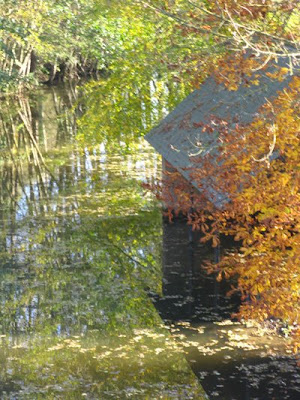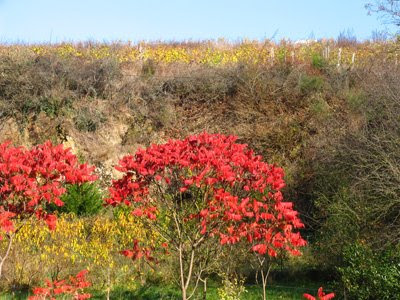 2008 harvest in the Pays Nantais with Che
2008 harvest in the Pays Nantais with Che
The VDQS Gros Plant Syndicat has opted to apply for IGP (Indication Géographique de Provenance) status. By the end of this year all those still remaining in the VDQS (Vin Délimité de Qualité Supérieure) category will have to opt for either AOP (Appellation d'Origine Protégée) or IGP. From 2009 to the end of 2011 only those that have applied either for AC or VDP status will be able to continue to sell their wines as VDQS.
The Loire has many of the now limited number of VDQS remaining, so it is make your mind up time for
Châteaumeillant, Coteaux d’Ancenis, Côtes d’Auvergne, Fiefs Vendéens, Haut-Poitou, Saint-Pourçain and Thouarsais.
 The château at Ancenis. Coteaux d'Ancenis is one of the
The château at Ancenis. Coteaux d'Ancenis is one of the
remaining VDQSs, who now have to opt for AOP or IGP
The Gros Plant Syndicat decided that Gros Plant would be better off as a IGP than trying to become AOP (similar to the existing AOC but a European-wide designation) because this will allow them to blend Gros Plant with other varieties such as Colombard, Montils and Pinot Gris (Malvoisie in the Pays Nantais). Going for AOP status would have meant reducing yields and some of the existing Gros Plant vineyards would have been left outside the new zone.
The Syndicat's decision is not a surprise. The production of Gros Plant declined considerably and it was very likley that it would have struggled to get AOP status. It will, however, be a shame if all Gros Plant ends up being blended with other varieties as good examples remain a wonderful match with oysters.
In early June 2008 as part of the European Union reform of the wine industry the French government adopted AOP and IGP. AOP is almost identical to the AOC (Appellation d’Origine Controllée) while IGP is a more flexible version of VDP (Vins de Pays). Under IGP producers can use whatever varieties they wish and it is possible to use oak chips and add tannins and acidity.
From: E-Lettre Vitisphere No 324 21st Novembre 2008Pays de Loire : Le VDQS Gros Plant choisit l’IGPLe syndicat du VDQS Gros Plant du Pays Nantais s’est prononcé pour un passage en IGP (Indication Géographique de Provenance) dans le cadre de la future segmentation de l’OCM qui entrera en application en août 2009. La disparition annoncée des VDQS avait déjà conduit le syndicat à se prononcer il y a quelques années sur son passage en AOC. Aujourd’hui le syndicat revient sur cette position, estimant que le cadre de l’IGP proposé par l’Europe correspond mieux aux ambitions de l’appellation Gros Plant. «Cette catégorie de vin offre une souplesse qui cadre bien avec ce qu’est actuellement le Gros Plant. Le choix de l’AOP nous aurait conduit à des baisses de rendement et des restrictions de l’aire d’appellation qui ne nous semblent pas opportunes. Par ailleurs, nous envisageons d’élargir notre encépagement en autorisant les assemblages avec le Colombard, le Montils et le Pinot gris. Ce projet a plus de chance d’aboutir dans le cadre de l’IGP que de l’AOP », argumente Jean-Michel Morille, vice-président du syndicat.




















































